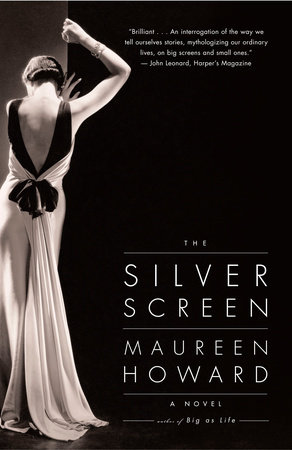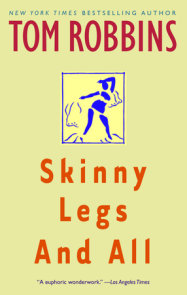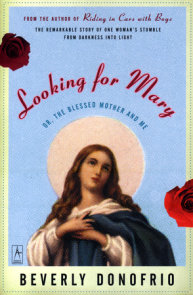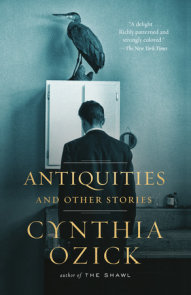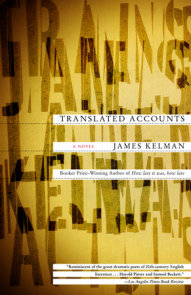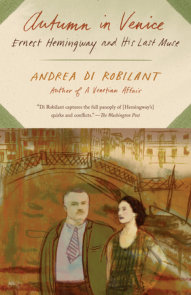READERS GUIDE
Questions and Topics for Discussion
INTRODUCTION
In 1928, Isabel Maher’s dreams were about to come true. The daughter of a struggling Rhode Island watchmaker, Isabel had traveled to Hollywood, seeking an improbable chance at fame. Tapped by MGM executives for a studio contract as the age of silent films was drawing to a close, she stood on the brink of stardom. Then, without a word of explanation, she walked away from her film career and went back to her hometown to marry a disabled insurance agent named Tim Murphy. Known simply as Bel Murphy, she raised two children, Joe and Rita, and virtually adopted a third: Gemma Riccardi, a girl from a bad neighborhood who was able to receive Isabel’s love and eccentricities to a degree that Rita never could. Now, seven decades after her impulsive flight from Hollywood, Isabel lies dying, and the three children she nurtured, now near retirement age, face an awkward reunion. However, their complex relationships with one another are only part of the challenge. With Isabel’s death comes a time for painful reflection, as Joe, Rita, and Gemma are left to ponder her legacy and to come to terms with the disappointments of their own lives. They reflect not only upon the mystery of Isabel’s aborted career, but also on the ways in which the former actress aggressively shaped their own lives, both for better and for worse.
In The Silver Screen, the third in a series of interconnected novels that began with A Lover’s Almanac and continued with Big as Life, Maureen Howard continues to trace the geometry of human souls, probing the nature of ambition, jealousy, and religious anxiety. Isabel’s son, Joe, whom she predestined to be a Jesuit priest, finds no solace in the teachings of the church and seeks fulfillment instead in the arms of a rebellious hipster from the Upper East Side. His sister, Rita, seemingly never fully a part of her mother’s plans, falls in love with a small-time gangster and tries to fit into a new identity in the Witness Protection Program. Alone among the three, Gemma has found success, but she remains unsure of its meaning. A famous photographer whose work is critically acclaimed but curiously unoriginal, she tries the hardest of all to understand Isabel’s choices and to appreciate a woman whose capacity to dream great dreams for others exceeded her own ability to live her own.
The struggles of Howard’s characters take place in an atmosphere unusually rich in cultural influences. Moby-Dick, Greta Garbo, Ansel Adams, and Citizen Kane, to name only a few, all leave their imprints upon the tangled histories and melancholy reflections of Gemma and the Murphys. Yet within this kaleidoscope of images and allusions, Howard also shows us keenly felt voids and yearnings. In a world where, as Howard tells us, “there are never enough stories,” a daunting question remains: do the stories that we tell ourselves and one another lead to understanding or only pull us deeper into unreality?
ABOUT MAUREEN HOWARD
Maureen Howard is the author of seven books, including A Lover’s Almanac, Big as Life, and Natural History. She has taught at a number of American universities, including Rutgers, Columbia, Princeton, Amherst, and Yale, and was recently awarded the Academy Award in Literature by the American Academy of Arts and Letters. She lives in New York City.
AN INTERVIEW WITH MAUREEN HOWARD
Your novel is permeated with references to other texts, be they poems, movies, popular tunes, or other novels. Indeed, each character seems to inhabit his or her own universe of cultural reference points. However, within this apparent cultural abundance, your characters tend to experience profound emptiness and isolation. They often seem to relate better to their cultural frameworks than to one another. What led you to explore this striking conjunction between textual richness and social deprivation?
Many of my characters are afflicted with doubt—call it cultural anxiety, if you will—an inability to come to terms with the lives they’ve been dealt or chosen. Father Joe lives uneasily within the culture of the Catholic Church. Unable to connect to the Spiritual Exercises of Loyola, he is drawn back to corporeal scenes of family life and his love for a girl. Fragments from the poets of contemplation float through his mind, words that connect him to faith. Given his mother’s death and his sister’s disappearance, he is at last set on a quest for human connection. Despite her technical mastery of photography and fashionable critique lingo, Gemma Riccardi is not complete. Though it fails, her attempt to live on Cotrell Street, where she was born, is near heroic: given her history, the street never was nor can it be an innocent scene of small-town life. The cultural baggage my characters carry—Mimi Salgado with her faith-based fashion, Victor Szabo’s obsession with silent film—stands in the way of tough, at times redeeming, views of their lives.
Perhaps the most pervasive references are to Moby-Dick. Isabel feels an intense connection with Melville’s novel. However, just what she derives from Moby-Dick remains obscure, even to her own children. How should we try to understand Isabel’s fascination with Melville’s masterpiece?
Isabel Maher once taught a corrupt version of Moby-Dick in the Maplewood School. In a season of discontent, she begins to read the real thing. As Bel Murphy, she aims to prove that she is still a real reader, though Melville’s great book is somewhat beyond her. Bel is landlocked in her comfortable family life. The adventure of reading the novel fosters a trip to the Seamen’s Bethel in New Bedford, where, reading passages of Moby, she comes on as an actress for her children and Gemma. I’m interested in the failure of her performance. Though she tells her small audience “Never fear when you don’t understand,” Bel is adrift in the mixed media, rhetorical flourishes, and dark passages of Melville’s story. Many years later, it’s Father Joe who recalls his mother’s slow progress with the big book she never finished. Moby-Dick; or, The Whale was a failure when it was published in 1852. Both the writer and the star of the silents went on, obscure, anchored in their own lives.
Isabel might also be an allusion to Isabel Banford, the mysterious heroine of Melville’s follow-up novel to Moby-Dick, Pierre. What does naming mean to you as a novelist? Have you always been so playful with names?
Naming is a calling into being, a conjuring that can be playful as well as meaningful. I did not have Melville’s Pierre in mind, but rather, perhaps, a countermove to Henry James’s Isabel Archer in Portrait of a Lady. My Bel, unlike James’s heroine, is visually portrayed, illustrated in a publicity shot. In her manner, she does earn the rank of lady. In Bridgeport Bus Mary Agnes Keely is furious that she’s named after a virgin martyr. Arty Freeman, the bastard in Lovers’ Almanac and Big as Life, is given a totally fabricated name by his mother. In Natural History Catherine Bray chooses between saints. The learned Catherine of Alexandria wins out. The false identities and names in The Silver Screen lend to the theme of shadowed lives, concealment.
The Silver Screen seems concerned with the ability of even a seemingly objective image to generate misconceptions. Isabel’s publicity photos show her in finery that went back to the wardrobe department as soon as the shoot was over. Gemma feels that even her Pulitzer Prize-winning photograph failed to convey the truth about its subject. The documentary that features Joe Murphy refuses to tell his story as he lived it. Do you think there can ever be such a thing as an honest image or story?
Bel answers your question. The white couch, the silver dress: it’s not her real life. She no longer wants to claim her Hollywood adventure except when pressed by Gemma, who yearns for the world beyond Cotrell Street. The truth of the Pulitzer photo is betrayed by the photographer’s eye for artistic arrangement over the urgency of the tragic moment. We are dominated by a visual culture—old news. I hope we are constantly learning to detect the distortions, to read the angle or lighting, or, as in Father Murphy’s documentary interview, the preconceived message that skews the picture. The honest story may be hard to get, but it’s what we must strive for.
Your narrative is enriched not only by its constant allusions but also by your adoption of multiple points of view. It’s difficult to think of many other authors who combine multiple first-person narrators with passages of third-person narration. How did you come to adopt this unusually complex mode of storytelling?
I don’t think it’s complex. All must be heard, the flute and the viola, the player piano. Joe, the street sweep in Dickens’s Bleak House, doesn’t know God, but he can do the police in different voices. Dickens could, too. There is nothing fancy or postmodern about switching masks, roles, or coming stage forward. Someone is, after all, writing the story.
Both Isabel and Pet become part of industries that present images of the human body for mass consumption. The process involves an idealization of the body that obscures the inner life of the subject. In fact, Pet feels as if her soul has been stolen by the camera. What are you suggesting about the ways in which media and the marketplace elevate the body above the mind and the spirit?
I’m suggesting what is well known, the price put on the body beautiful, on pretty girls and boys is very much in place. As for the mind: there are many serious books published and read each year, an embarrassment of riches, but we are mostly into entertainment. As for spirit: surf the channels early in the morning and you’ll have a surfeit of preachers like Mimi Salgado’s Preacher, selling salvation, selling the operative word.
A novel, pretty obviously, is a deployment of words. However, two of your most engaging characters, Isabel and Gemma, have a relationship with words that is wary at best. Isabel flees from her movie career just before it will require her to speak, and Gemma speculates that she may have chosen her career in photography in response to Isabel’s “commanding silence.” What do you have to tell us about your use of language to investigate silence?
To tell you? Gemma finds the words to tell at some length her failure at originality. Though mythologized as Echo, she finds the words to state her case. Joe confessed his lapse as a priest to himself, closed circuit. In the end, he tells the story of the Murphys of Land’s End to Father Flynn, but never mentions his love for the beautiful Fiona. Speaking from the grave, Bel recalls her silent film days for Gemma. Rephrasing Keats, I might say she dies into life after much silence. It’s a sadness that her final words are wasted. Silence is golden and tarnished. As a writer, I’m not granted Bel’s choice; I cross over to talkies.
One real film star who gets frequent mention in The Silver Screen is Greta Garbo, who achieved the paradoxical status of world-famous recluse. Another figure who enters the novel’s discourse is Orson Welles’s Charles Foster Kane, another highly public person of mystery. The presence of these figures seems to point us toward a dilemma of life in the media age. In fact, there is a fairly ferocious dynamic in your novel between private and public life. Any comments?
We live our little lives against the backdrop of history. Garbo in life, and Kane in Welles’s story, enact withdrawal from the public sphere though even that silence becomes fabled. I’m actually more interested in Father Joe’s placing the experience of war for a bright student by simply calling Salvador “a country where I spent some time.” A reader may note the war wound that crippled his father in 1916; and in Gemma’s photographs of the dirty war in Argentina as well as her understanding that going off to shoot the war in the desert can’t afford the spectacular lighting of the bombardment of Italy in World War II. I like Tim Murphy not trading war stories with vets, and Cyril O’Connor—his conflict was Korea—pointing out the lessons of history to his peacenik daughter, Fiona. So it goes: we witness, then incorporate the big picture into the snapshots of our works and days, our seasons.
With its pastiche of cultural references and its soundings on death, guilt, and remembrance, The Silver Screen feels at times like a prose version of The Waste Land. Do you yourself sense any artistic connections with Eliot’s poem?
I’m not channeling Eliot. Most serious writers have read that cornerstone of modernism, a great poem. Lots to learn from his placement of parts, how they play off each other, but that’s true of Virginia Woolf’s “The Window” and “Time Passes” in To the Lighthouse. My pastiche, as you call it, is no more than the flack of low and high that we live with each day—The fragments I have shored against my ruins—with no need for footnotes, all perfectly accessible and clear.
As a writer, you have a well-deserved reputation for combining superb storytelling with philosophical insight. Which is more important to you as a novelist: creating sympathetic, convincing portrayals of characters and situations, or making more generally incisive observations about human existence?
It’s all equally worthy. I would not use the word important, but why not call upon Melville one last time: “I’ll stand for the heart. To the dogs with the head!” (Letter to Nathaniel Hawthorne, 1851)
You are an excellent writer. What suggestions do you have for becoming an outstanding reader?
The contract is between the reader and the words on the page. Fulfill your part of the bargain. Worry over a word; figure a difficult phrase, read a passage out loud to hear it. Read for pure pleasure or the reward of really getting the story. Read late at night with a flashlight under the covers. Read on the subway and when the game is called because of rain.
DISCUSSION QUESTIONS







